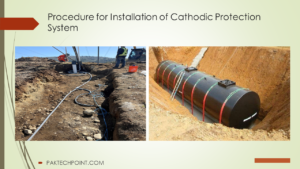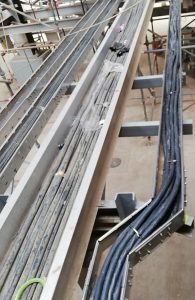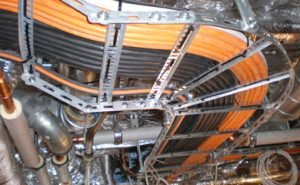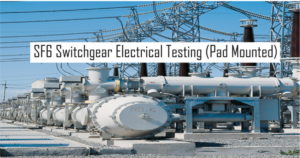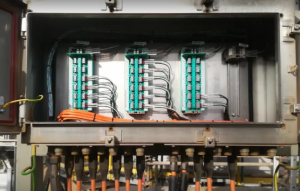This article is about cable tray installation as per international standard of NEMA VE1, NEMA VE2 and ARAMCO standards.
CABLE TRAY INSTALLATION PROCEDURE / METHOD STATEMENT
1. All cable trays & accessories received at site shall be inspected, handled and stored upon receipt in accordance with Project Procedure for Material Control.
2. Inspections shall be conducted by the Electrical contractor, Electrical QC Inspector and Company representative in accordance with Inspection & Test Plan (ITP) inspection test plan.
3. Cable trays and covers for electrical & instrumentation cables shall be manufactured from hot dip galvanized carbon steel matching to project requirement specifications.
4. Cable tray installation shall be self supporting type with a wide flange (48mm or 72mm or 100mm) in accordance with cable cross section.
5. Cable tray installation shall preferably be installed flat in buildings or operating structures. Tray shall run as far as possible under flooring and walkways. Only in special cases shall cable trays be installed vertically or on edge. On vertical cable trays and on edgewise – horizontal cable trays, each cable shall be fixed with 20mm wide stainless steel strips (two per meter). On horizontal cable trays, laid flat cables are fixed in group (one fastening for every two or three meters). On pipe racks, cable tray shall run on the top most level(s).
6. Cable trays shall be fixed onto standard steel shapes, welded to steel structures or fixed on to concrete structures with self-drilling dowels. Distance between fixing points and cable tray support spacing shall be a maximum of three meter for ladder type tray and two meter maximum for perforated tray so as to avoid strain on cable trays.
7. Cable tray installation shall be designed to carry a load of 100kg/m. All cable trays shall be perforated or ladder type to avoid the retention of water and to allow fastening of the cables.
8. Cable trays shall be provided with covers where there is high risk of mechanical damage during normal operation or maintenance periods. Cover fabrication shall be the same as that of cable trays themselves and shall be fixed on cable trays with proper clips recommended by cable tray Manufacturer/Vendor and comply with project required specification.
9. The number of single or multi-conductor cables rated 11kV, 6.6kV, 1kV or less in cable trays shall include an allowance of 20% extra space for future expansion.
10. Separate racking/trays shall be installed for the following electrical systems, generally arranged top to bottom manner.
a.) HV and MV cables
b.) LV Power, Lighting and Control cables for non-instrument cables
c.) Instrument Cables (Electronic and Signal Cables)
d.) Telecommunication Cables
